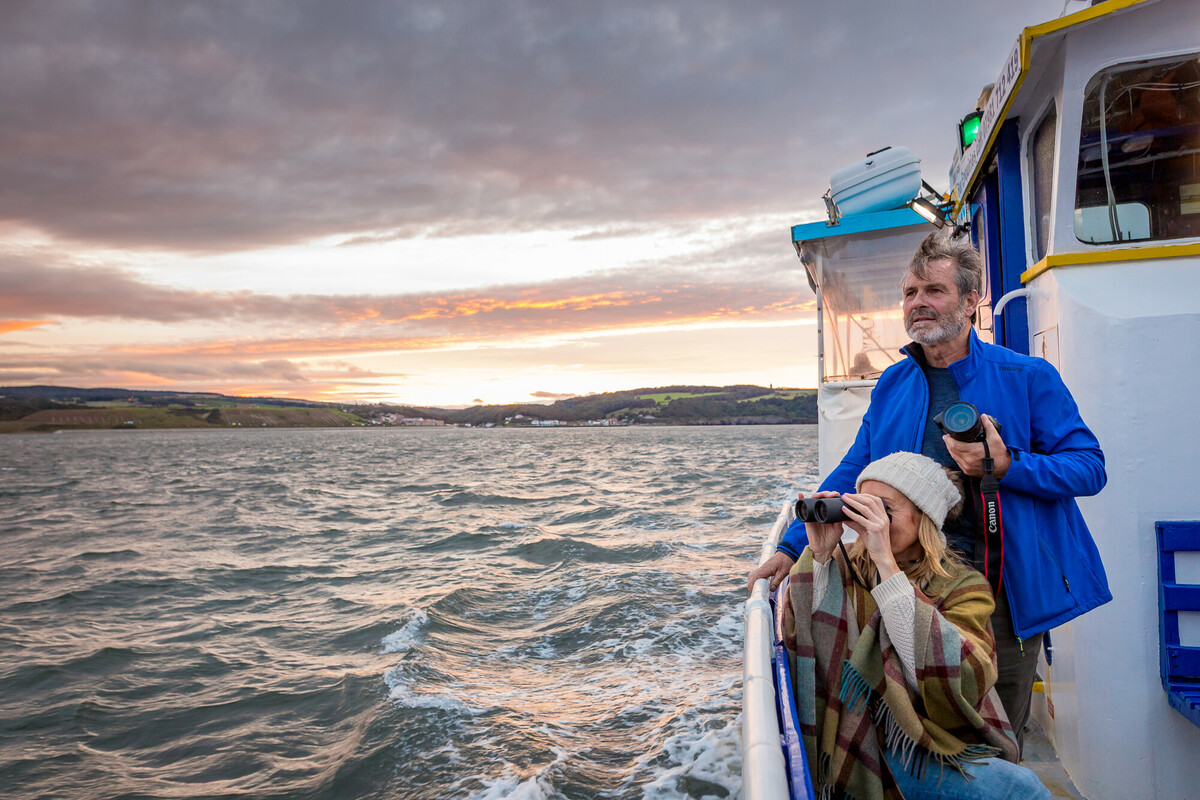The heather is holding on but it's a month of change as summer draws to an end and wildlife starts to prepare for the approaching winter, eating more or stockpiling reserves.
Breeding waders (golden plover, lapwings and curlew) will be thinking about leaving for the coast or the lowlands.
Our tip
Start with a morning spent at sea whale-watching and porpoise-spotting on Real Staithes’ traditional fishing boat ‘All My Sons’. Then it’s back to land for a totally different perspective, observing from a coastal watch point with the experts from Yorkshire Coast Nature, where you can expect to see species not seen from the boat. This joint Seabirds and Whales adventure runs during the summer too.

Also look out for:
- Whales. In the autumn, whales move south along Yorkshire's coast, following the shoals of mackerel and herring. Late August through to early November is the best time to look for them, and whale watching cruises run from Staithes with Yorkshire Coast Nature or Three Sisters Sea Trips. Minke whales are spotted regularly, but sei, fin and even large humpback whales have been seen in recent years.
- Badgers and go badger watching in North York Moors forests at a brand new purpose built hide, as the families go foraging and the cubs play boisterously. Join the organised watch from May until September. Please contact Hidden Horizons for more information.
- Wildlife making the most of the autumn food glut with abundant rowan berries and blackberries. Bright red rowan berries will be hanging heavy on the trees in woodland edges, moorland and hedgerows. Keep a note of where they are and remember to visit later in winter to see hungry birds like redwing, fieldfare, ring ouzels and waxwings gorging on the fruits. Blackberries are at their best too – across the North York Moors and Howardian Hills many woodland-edge and field-edge footpaths are next to brambles offering a good harvest. Don’t forget to leave a few for the small mammals and birds! Mice, voles, foxes and badgers have a taste for them.
- Apple orchards, with late September being the best time to visit one. Sample some of our best native varieties, and possibly the refreshing cider made with them. Orchards are a fantastic place to see birds, too, and are a great habitat for bees, moths, butterflies and hoverflies, all feasting on the fallen fruits. This abundance of insects also attracts feeding bats. From the picturesque village of Ampleforth, uncover the story of Ampleforth Abbey’s award-winning cider on one of its behind the scenes tour of its historic orchard of 2,000 trees where 40 different varieties are grown, before heading to the Cider Mill to see how Ampleforth’s cider and cider brandy is made. There’s a tasting or two, not to mention a slice of Ampleforth’s famous cider apple cake.
Walk of the month
Enjoy sweeping views across to Roseberry Topping and Captain Cook monument while also seeing the ancient woodland restoration work in Greenhow Plantation on our Clay Bank walk. Alder, rowan, willow, oak and birch have taken over quickly where conifers have cleared, with rowan berries and other autumn bounty to be found on this short walk.
